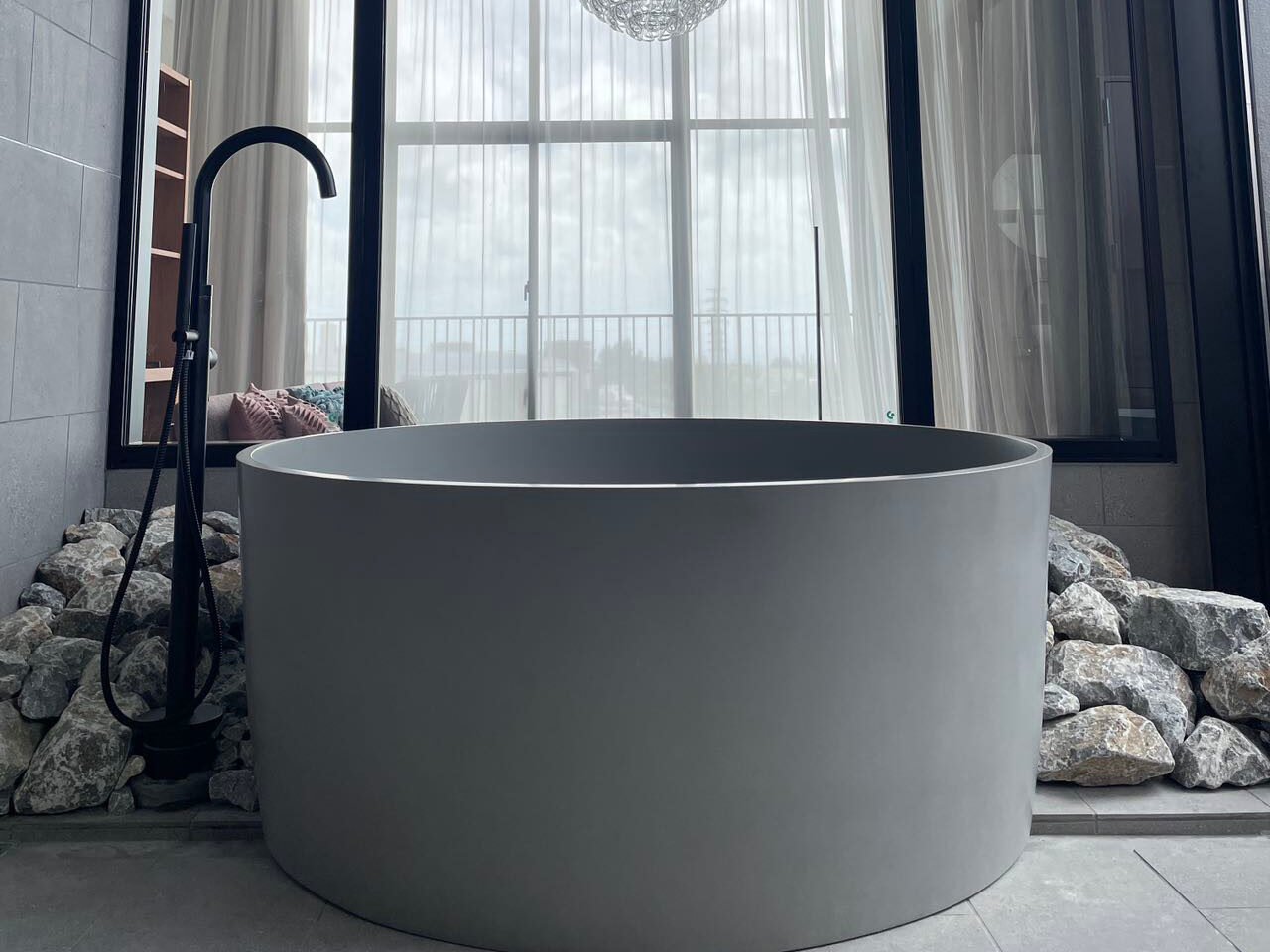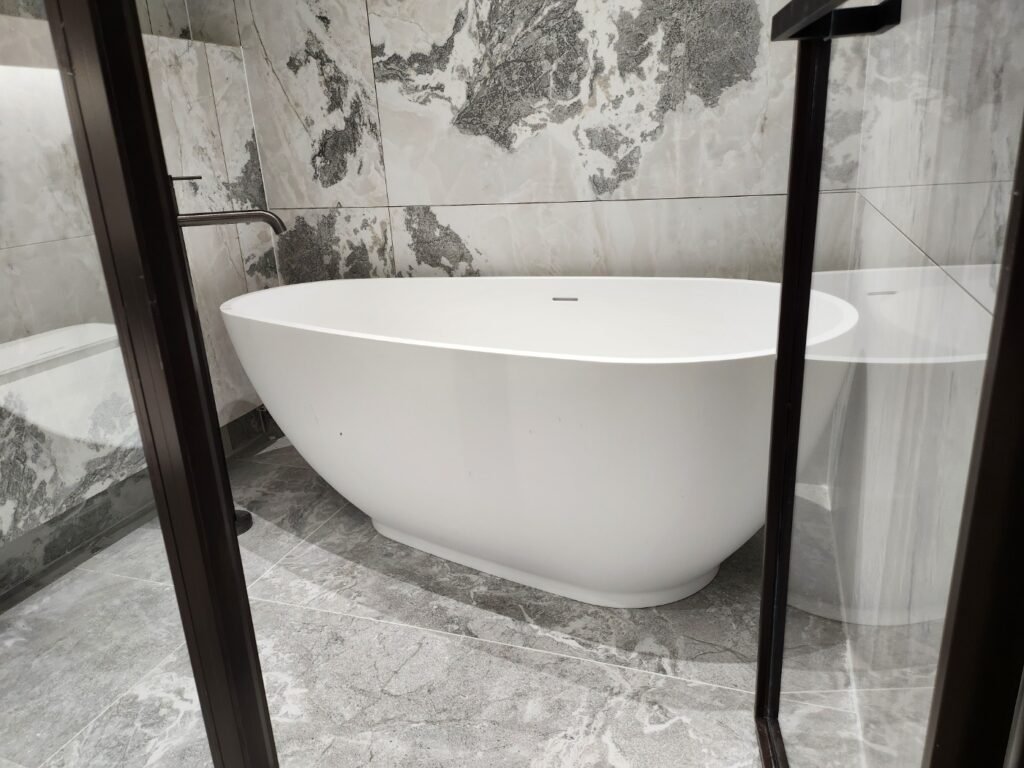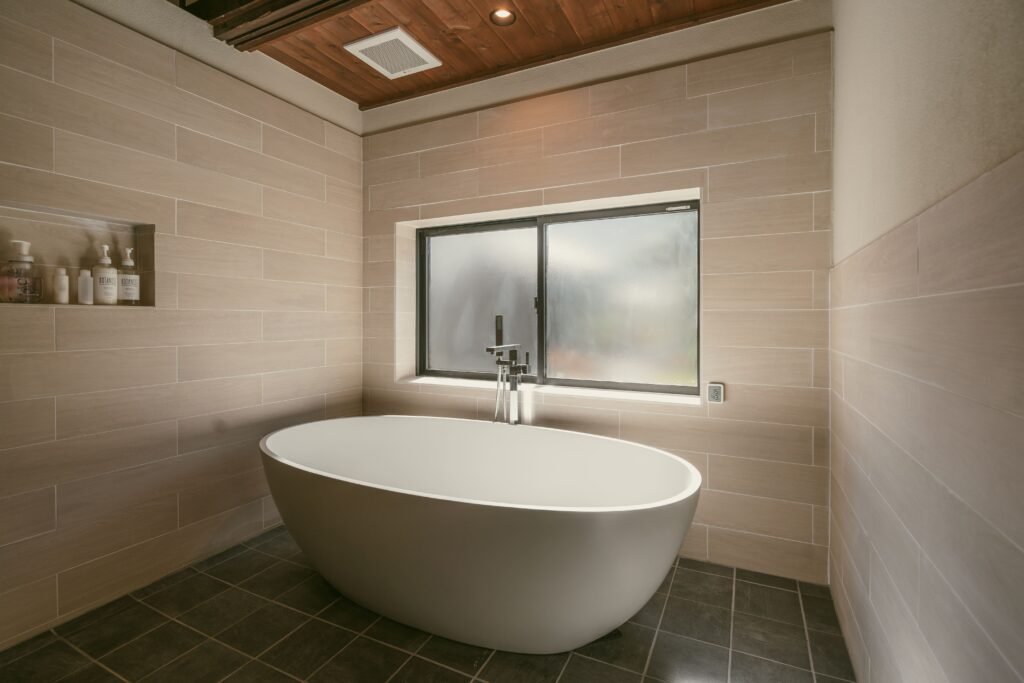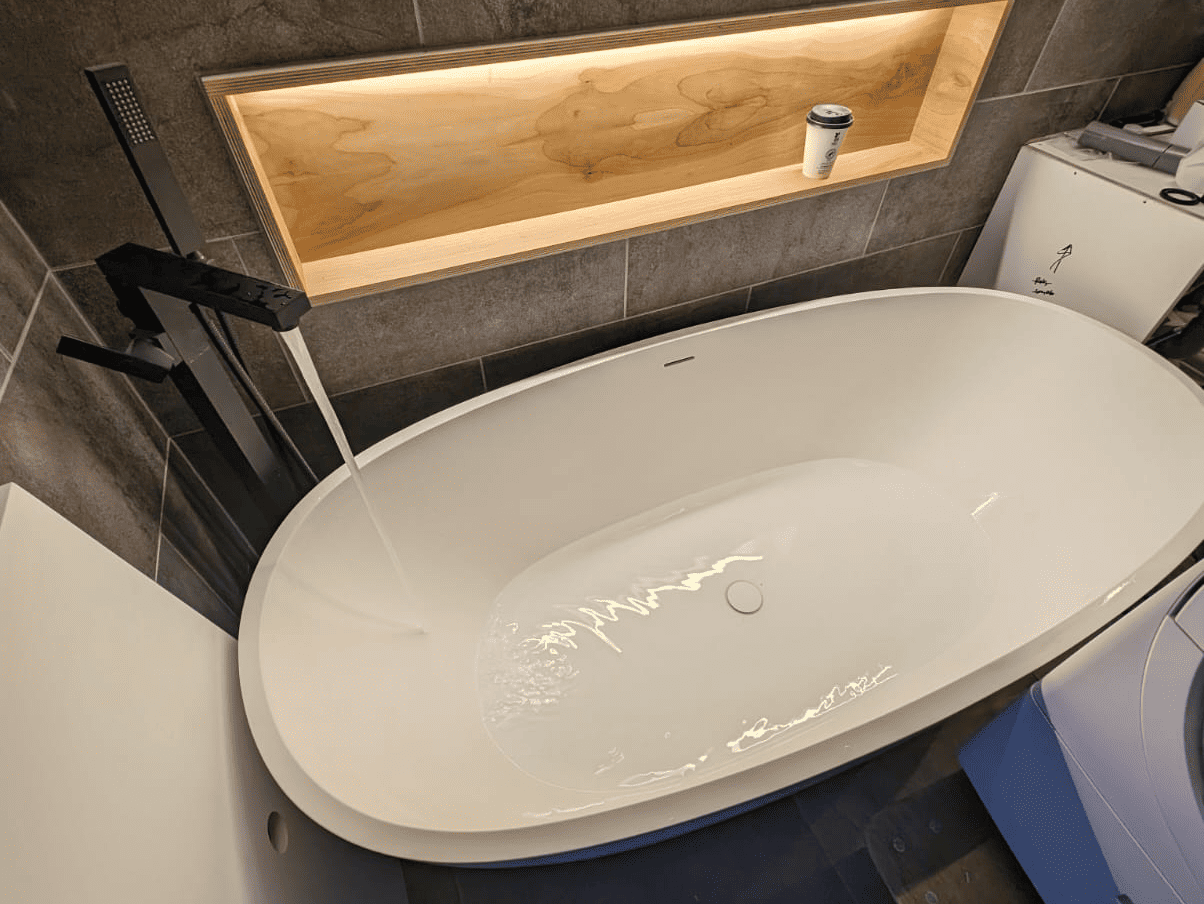Solid surface bathtubs are known for their elegance, seamless finish, and durability. However, like all composite materials, they can be vulnerable to thermal shock—a sudden temperature change that can cause internal stress and surface cracks. For architects, contractors, and homeowners, understanding how to prevent this issue is essential to ensure long-lasting performance and beauty.


What Is Thermal Shock?
Thermal shock occurs when a solid surface material is exposed to an abrupt change in temperature—such as pouring boiling water directly into a cold bathtub. The difference in surface and internal temperature creates tension, which can lead to microfractures or visible cracks over time.
While solid surface materials like acrylic-modified resins and aluminum trihydrate are engineered for strength, they still need proper care during installation and daily use.
Why Solid Surface Bathtubs Are Prone to Temperature Stress
Unlike metal or stone, solid surface materials have a moderate heat expansion rate. Rapid heating or cooling—especially during first use or cleaning—can cause stress between the upper coating and inner layers.
Common causes include:
- Filling the tub instantly with hot water instead of gradually mixing warm and cold water.
- Exposing the surface to extremely cold or hot environments (outdoor installations).
- Installing the bathtub without sufficient structural support underneath.
- Using chemical cleaners that alter surface temperature during reaction.


Step-by-Step Guide to Prevent Thermal Shock Cracks
1. Gradually Fill with Warm Water
Always start with lukewarm water before turning on hot water. This allows the solid surface to warm evenly and adjust naturally.
2. Maintain Stable Room Temperature
Avoid installing bathtubs in areas subject to extreme temperature swings (like unheated rooms). For outdoor or coastal villas, maintain a moderate ambient environment.
3. Proper Base Support
Ensure the bathtub rests on a fully supported and leveled base—not just four corners. Unsupported bases can amplify stress during temperature changes.
4. Avoid Abrupt Cleaning with Boiling Water
When cleaning or disinfecting, avoid pouring hot water directly onto a cold surface. Instead, use mild detergent and warm water to maintain hygiene without stress.
5. Choose Certified Solid Surface Materials
Not all solid surface tubs are made equal. Always choose brands with tested resin ratios and verified heat resistance. KKR®’s solid surface bathtubs, for example, undergo five-day thermal storage and expansion tests to guarantee durability.


How to Identify Early Signs of Thermal Shock
Watch for:
- Fine surface cracks (often near the drain or edges).
- Changes in gloss or texture.
- A slight “clicking” noise when the bathtub cools.
Early detection allows professional technicians to refinish or recoat the surface before damage worsens.
Repairing Minor Cracks in Solid Surface
Minor thermal cracks can sometimes be repaired using professional adhesives or resurfacing compounds. The process typically includes:
- Cleaning and drying the damaged area.
- Applying a color-matched solid surface resin adhesive.
- Sanding and buffing after curing.
However, for deep or structural cracks, replacement or professional repair from the manufacturer is recommended.
Why Contractors Prefer Solid Surface Despite the Risk
When properly installed, solid surface bathtubs outperform acrylic, enamel, and stone in long-term resilience. The material’s seamless design, easy cleaning, and customizable shapes make it ideal for both luxury hotels and residential projects.
KKR® solid surface bathtubs, for example, are:
- Tested for high-temperature resistance up to 80°C.
- Non-porous, antibacterial, and easy to refinish.
- Available in hundreds of colors, sizes, and styles.


Conclusion
Thermal shock cracks are preventable with the right care and installation practices. By filling the bathtub gradually, maintaining temperature stability, and using certified solid surface materials, developers and homeowners can enjoy long-lasting beauty and functionality.
For architects and contractors seeking reliable, heat-resistant solid surface bathtubs, KKR® offers over 25 years of manufacturing expertise with proven performance in global hotel and villa projects.
👉 Explore more at kkrbath.com
FAQ
Q1: What causes a solid surface bathtub to crack?
A: Rapid temperature changes or uneven installation support are the main causes of thermal shock cracks.
Q2: Can thermal cracks be repaired?
A: Minor surface cracks can be refinished with solid surface adhesive, but deeper cracks may require professional repair.
Q3: How do I prevent thermal shock?
A: Fill the tub with warm water gradually, avoid boiling water contact, and ensure full bottom support during installation.
Q4: Are all solid surface bathtubs heat-resistant?
A: Most are, but the degree varies by brand. Always select certified materials tested for thermal performance.
Q5: Is solid surface better than acrylic for heat resistance?
A: Yes. Solid surface maintains stability under heat better than standard acrylic and can be refinished if damaged.




